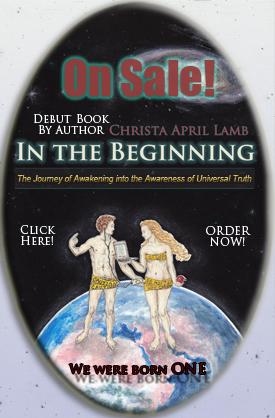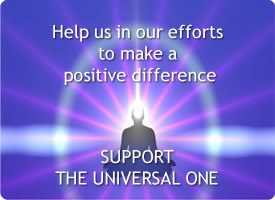Aboriginal Spirituality
Aboriginal spirituality is inextricably linked to land, “it’s like picking up a piece of dirt and saying this is where I started and this is where I’ll go. The land is our food, our culture, our spirit and identity.”
Dreamtime and Dreaming are not the same thing. Dreaming is the environment the Aboriginal people lived in and it still exists today “all around us”. None of the hundreds of Aboriginal languages contains a word for “time”.
We see your skin as a coat of armour, protecting your spirit and your Dreaming.
—Rob Waters [2]
Too many white people have tried to explain Aboriginal spirituality. I don’t want to follow. I’d like to let Aboriginal people express what they feel Aboriginal beliefs and spirituality are all about.
What is Aboriginal spirituality?
Our spirituality is a oneness and an interconnectedness with all that lives and breathes, even with all that does not live or breathe.
—Mudrooroo, Aboriginal writer [1]
Aboriginal spirituality, Mudrooroo continues, “is a feeling of oneness, of belonging”, a connectedness with “deep innermost feelings”. Everything else is secondary.
Aboriginal spirituality and the land
Aboriginal spirituality is invariably also about the land Aboriginal people live on. They experience a connection to their land that is unknown to white people. A key feature of Aboriginal spirituality is to look after the land, an obligation which has been passed down as law for thousands of years.
A powerful explanation of the spiritual connection of Indigenous people to the land can be found in a publication of the now abolished ATSIC [3].
We don’t own the land, the land owns us. The land is my mother, my mother is the land. Land is the starting point to where it all began. It’s like picking up a piece of dirt and saying this is where I started and this is where I’ll go. The land is our food, our culture, our spirit and identity.
—S. Knight [3]
Aboriginal author and Yorta Yorta woman Hyllus Maris (1934-86) expressed this connectedness with the land beautifully in her poem Spiritual Song of the Aborigine [4].
Spiritual Song of the Aborigine
I am a child of the Dreamtime People
Part of this Land, like the gnarled gumtree
I am the river, softly singing
Chanting our songs on my way to the sea
My spirit is the dust-devils
Mirages, that dance on the plain
I’m the snow, the wind and the falling rain
I’m part of the rocks and the red desert earth
Red as the blood that flows in my veins
I am eagle, crow and snake that glides
Thorough the rain-forest that clings to the mountainside
I awakened here when the earth was new
There was emu, wombat, kangaroo
No other man of a different hue
I am this land
And this land is me
I am Australia.
Poem by Hyllus Maris.
Aboriginal spirituality is the belief that all objects are living and share the same soul or spirit that Aboriginals share.
—Eddie Kneebone, Aboriginal Reconciliation campaigner and painter [5]
This is a very fundamental statement about Aboriginal spirituality. It implies that besides animals and plants even rocks have a soul.
An Aboriginal person’s soul or spirit is believed to “continue on after our physical form has passed through death”, explains Eddie Kneebone [5]. After the death of an Aboriginal person their spirit returns to the Dreamtime from where it will return through birth as a human, an animal, a plant or a rock. The shape is not important because each form shares the same soul or spirit from the Dreamtime.
But what is the Dreamtime?
What is the ‘Dreamtime’ or the ‘Dreaming’?
‘Dreamtime’ or ‘Dreaming’ has never been a direct translation of an Aboriginal word. The English language does not know an equivalent to express the complex Aboriginal spiritual concepts to white people.
Aboriginal languages contain a lot of words for spirituality and beliefs, such as
tjurkurrpa, jukurrpa, tjurgurba (Pitjantjatjara people, north-western South Australia),
altjeringa, alcheringa, alchera, aldjerinya (Arrernte people, central Australia),
palaneri,
bugaregara,
ngarangani,
ungud (Ngarinyin people, north-Western Australia),
wongar (north eastern Arnhem Land),
bugari (Broome, north-Western Australia).
There is no spelling orthodoxy because native speakers did not write down Aboriginal languages.
‘The Dreaming’ or ‘the Dreamtime’ indicates a psychic state in which or during which contact is made with the ancestral spirits, or the Law, or that special period of the beginning.
—Mudrooroo, Aboriginal writer [6]
Aboriginal spirituality does not consider the ‘Dreamtime’ as a time past, in fact not as a time at all. Time refers to past, present and future but the ‘Dreamtime’ is none of these. The ‘Dreamtime’ “is there with them, it is not a long way away. The Dreamtime is the environment that the Aboriginal lived in, and it still exists today, all around us” [5]. It is important to note that the Dreaming always also comprises the significance of place [7].
Hence, if we try to use an English word, we should avoid the term ‘Dreamtime’ and use the word ‘Dreaming’ instead. It expresses better the timeless concept of moving from ‘dream’ to reality which in itself is an act of creation and the basis of many Aboriginal creation myths. None of the hundreds of Aboriginal languages contain a word for time [8].
We are the oldest and the strongest people, we’re here all of the time, we’re constant through the Dreaming which is happening now, there’s no such thing as the Dreamtime.
—Karl Telfer, senior culture-bearer for Kaurna people, Adelaide [9]
Note that the Dreaming is not the product of human dreams. The use of the English word ‘dreaming’ is more of a matter of analogy than translation [7].
The Dreaming also explains the creation process. Ancestor beings rose and roamed the initially barren land, fought and loved, and created the land’s features as we see them today. After creating the ‘sacred world’ the spiritual beings “turned into rocks or trees or a part of the landscape. These became sacred places, to be seen only by initiated men.” [10]
The spirits of the ancestor beings are passed on to their descendants, e.g. shark, kangaroo, honey ant, snake and so on and hundreds of others which have become totems within the diverse Indigenous groups across the continent [7].
It is interesting to note that many Aboriginal people also use the term ‘Dreaming’ to refer to their concepts about spirituality. This might be because some of them find ceremonies or songs in a state of dreaming, a state between sleeping and waking [6]. Strictly speaking, dreaming and mythology can be considered as the same thing: the deep mental archetypes and images of wisdom which we take on to be guided by them when the conscious mind is in a state of quietness [11].
The fact that the Dreaming is still around Aboriginal people is a fundamental difference to other spiritual beliefs. In Christianity, for example, the spiritual world is ‘heaven’, reachable only after death and never while the person is still alive.
What we draw on from our memories, and think, imagine and create in our daily lives is our dreaming.
—Djon Mundine, Bundjalung man and Aboriginal Curator, Campbelltown Arts Centre [12]
Each Aboriginal person identifies with a specific Dreaming. It gives them identity, dictates how they express their spirituality (see below) and tells them which other Aboriginal people are related to them in a close family, because those share the same Dreaming [13]. One person can have multiple Dreamings [13].
Each form shares the spirituality from the ‘Dreaming’. It is during ceremonies that the trance-like dreaming state seizes the Aboriginal people and they connect with the ancestral beings [14].
When spirituality clashes with business
Some non-Aboriginal people are unable to respect Aboriginal spirituality once their own interests are threatened.
Lake Eyre in South Australia is sacred to the local Arabana people. In 2011 they had banned sailing on the lake due to its spiritual significance.
When the lake flooded after a long period of drought the Lake Eyre yachting club’s commodore was quick to assert that the sailors had “a perfect common law right to boat on that waterway” [15], encouraging them to to risk hefty fines for using the lake without a permit in defiance of Arabana wishes.
Dreaming stories
My culture is my identity.
Dreamtime stories tell the life of my people.
Growing older.
Hearing stories of my ancestors living off the land
Becoming one with the creatures
Even though I haven’t met them
I feel this unbreakable connection
Through the stories I have heard.
The stories that have been passed down through generations.
These stories are living through us.
Without our culture we have no identity
And without our identity
We have nothing.
Poem by students Kiarra and Karri Moseley and Luke Bidner [16]. Read more Aboriginal poetry.
Resources
Aboriginal Men of High Degree is a book written by anthropologist A.P. Elkin.
Indigenous people who read the book agree with what he says about Aboriginal spirituality, ceremonies and rituals.
What is not Aboriginal spirituality?
Many texts and books use ‘Aboriginal religion’ when addressing Aboriginal spirituality. But these two terms should not be confused:
Spiritual “relates to people’s deepest thoughts and beliefs, rather than to their bodies and physical surroundings” [17].
Religious is “something that [...] is about or connected with religion”, i.e. “the belief in a god or gods and the activities that are connected with this belief, such as prayer or worship in a church or temple” [17].
Hence spirituality is the foundation of religion, the deeper layer of any religious practice and expression.
Some little children come in and say ‘but God made the world’. And I say, ‘Yes, according to the Bible, yes, God did; but according to my spiritual beliefs my rainbow serpent made these things’, so we don’t have any arguments over that either; they understand: religion is their way, spiritualism is our way. They understand.
—Oodgeroo Noonuccal, Aboriginal writer [18]
Spiritual tourism
A high number of tourists to Australia want to interact with Aboriginal people and learn about their culture. This seems to match with what Aboriginal people want—the tourist industry is what they feel is compatible with their cultural, economic and social goals [19].
Aboriginal spirituality is high on the list of many tourists visiting Australia, so much so, that some propose to take local traditional tourism to another level and promote it as spiritual tourism to teach people about the spirituality of the region [20].
“A spiritual tourist is a person who travels as a tourist for spiritual growth or development, without overt religious compulsions,” says Farooq Haq, a business lecturer at Charles Darwin University [26].
But a venture in the tourism industry is not without risk. Aboriginal communities need to be mindful not to create programs that miss their target or develop programs in areas that are inaccessible to tourists.
Tourism is a good way to [pass on cultural knowledge] and it helps to build pride in our young people and helps them to have confidence when talking with whitefellas.
—Dillon Andrews, Bungoolee Aboriginal Tours, Fitzroy Crossing, Western Australia [19]









